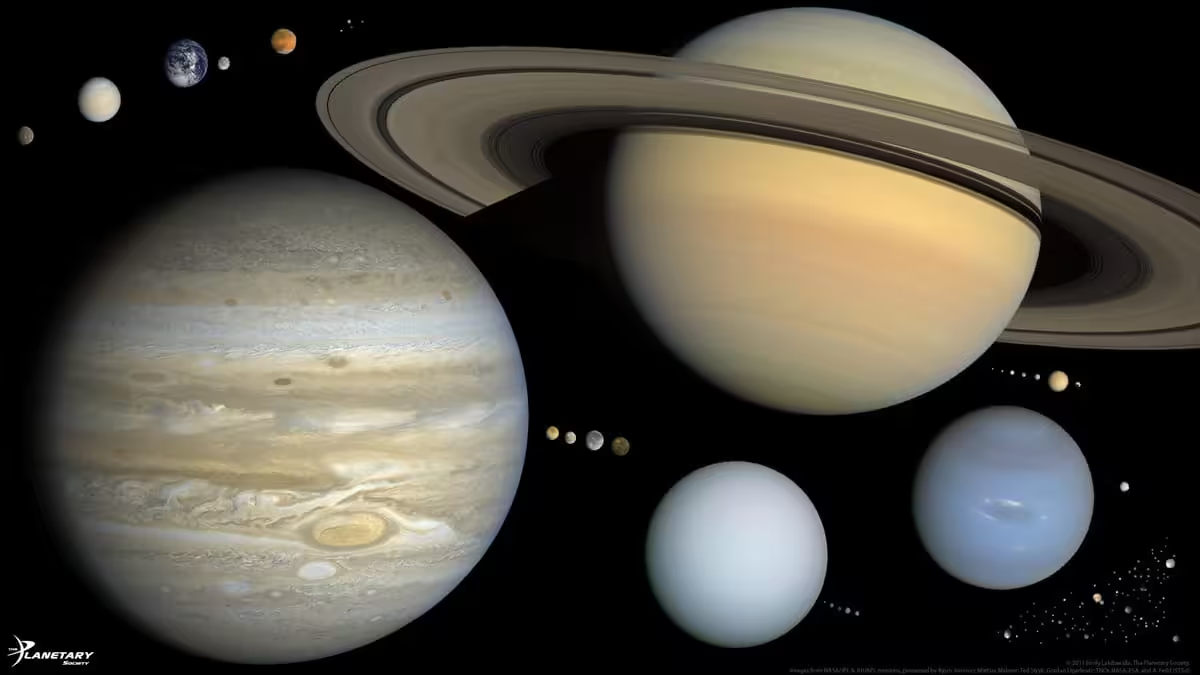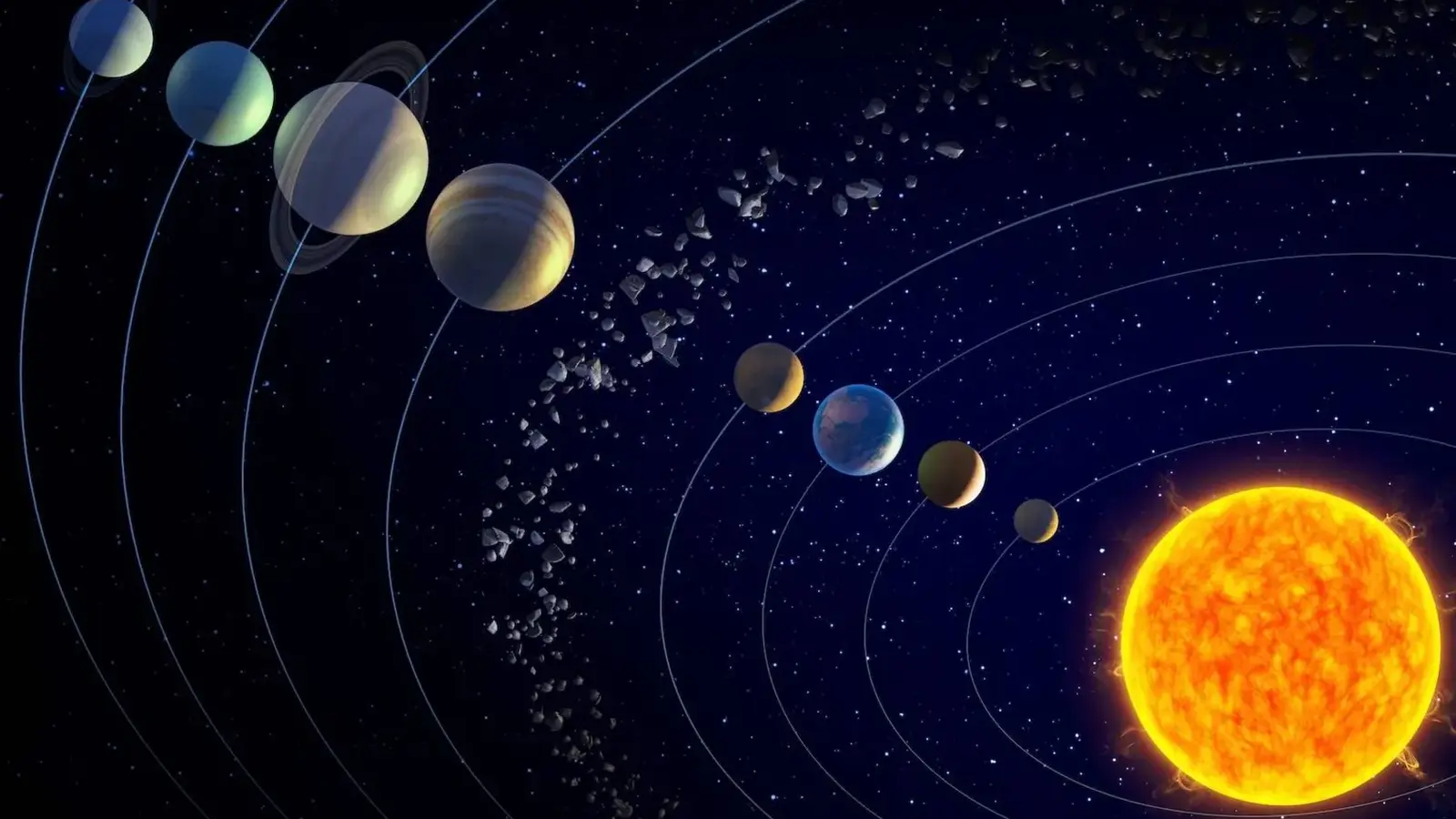5 Minutes
Why do scientists still argue over which planets appeared first in our solar system? More than four decades of meteorite analysis, lunar samples and robotic missions have sharpened our view — but the order in which planets emerged from the protoplanetary disk remains an active research question. Here’s a clear look at the competing theories, the tools researchers use to date worlds, and what upcoming missions could finally settle the timeline.
How planets are born: pebble-by-pebble or sudden collapse?
The dominant picture of planet formation is the classical accretion model. Tiny grains of dust and ice collide and stick together, growing into pebbles, then planetesimals and, over millions of years, into full-fledged planets. This slow, bottom-up process naturally explains the layered structure of the solar system: small, rocky terrestrial planets close to the Sun and massive gas giants farther out.
In this scenario, gas giants like Jupiter and Saturn must assemble quickly while the protoplanetary gas disk still contains ample hydrogen and helium. If core growth stalls or the disk dissipates early, a giant planet cannot capture a massive atmosphere — which is why many scientists infer that gas giants formed early.
But a rival idea, disk instability, says parts of the protoplanetary disk could fragment and collapse rapidly, forming large planets on much shorter timescales. Pebble accretion — an accelerated version of the classical model — also allows fast core growth, potentially changing the relative order of planet formation.

Dating planets: surfaces, meteorites and the limits of timekeeping
There are two common ways researchers assign ages in planetary science. One approach measures the age of the materials that built a planet — for example, radiometric dating of meteorites that are thought to be remnants of early building blocks. Those meteorite ages anchor the formation of the solar system at about 4.56 billion years ago.
The other approach looks at the surface age of a planet or moon. Counting impact craters and comparing crater populations across bodies gives a relative surface age: heavily cratered surfaces are older, and smooth or tectonically active surfaces are younger. Earth, with active plate tectonics, volcanism and erosion, ends up with the youngest-looking surface among the inner planets; Venus and Mars retain older, more cratered terrains.
Both methods have limits. Radiometric ages usually come from meteorites or returned samples — and those samples may represent only fragments of a planet’s history. Crater counting depends on models of impactor flux, which introduces uncertainties that can amount to millions of years. As Michael Meyer, head of astronomy at the University of Michigan, told LiveScience: “Timing events in space isn’t simple — it’s one of the toughest challenges in astronomy.”
Why the order matters — and what it tells us about exoplanets
Figuring out whether gas giants or rocky planets formed first shapes our understanding of planetary system architectures. If gas giants formed early and migrated, they could have cleared or redistributed material and influenced where rocky planets like Earth could form. Conversely, if rocky planets grew first, that might explain why some systems lack close-in gas giants.
These formation sequences also inform exoplanet studies. Observations of distant protoplanetary disks reveal rings, gaps and spiral waves — signs of planet formation in action. By comparing those disks with our solar system’s inferred timeline, scientists refine models that predict what kind of planetary systems common processes produce.
What we still need: samples, missions and new observations
To improve age estimates, planetary scientists stress the value of sample return. Lunar rocks brought back by Apollo missions revolutionized our ability to date early solar system events; similar samples from Mars, asteroids and icy moons would sharpen the chronology. Kavi Borrellina, a planetary scientist at Purdue University, argues that “bringing pristine rock back to Earth allows the high-precision isotopic analyses needed to untangle formation sequences.”
Upcoming missions — including expanded sample-return efforts and higher-resolution telescopes to watch disks around young stars — promise more data. In particular, coordinated studies combining radiometric ages, crater statistics and dynamical models will narrow uncertainties and may finally reveal a robust birth order for the planets.
Expert Insight
“We’re no longer in an era of just proposing theories,” says Dr. Sara Vega, an astrophysicist specializing in planet formation. “New samples and high-resolution imaging are forcing models to make testable predictions. In the next decade we should be able to say with confidence whether giants seeded the outskirts first, or whether rocky worlds got an early start.”
Ultimately, the question of which planets formed first is more than trivia: it connects material chemistry, disk dynamics and long-term planetary evolution. With better clocks — both geochemical and astronomical — scientists are steadily piecing together the solar system’s family tree.
Comments
mechbyte
This gives me chills! The idea that pebble-by-pebble vs collapse could change everything for exoplanets. Bring on more samples pls
astroset
Wait, we still can't tell if Jupiter formed first? Feels wild. Meteorites say one thing, disk images another... hmm, skeptical, lots unknown


Leave a Comment